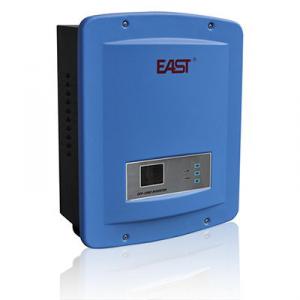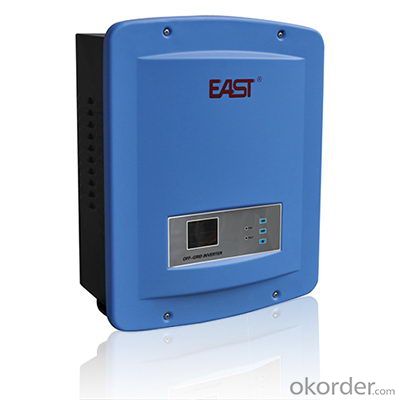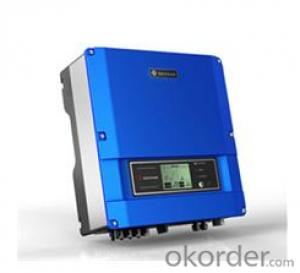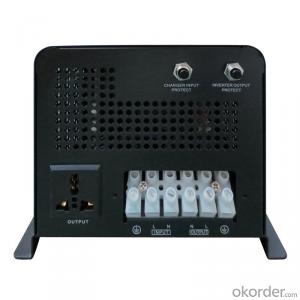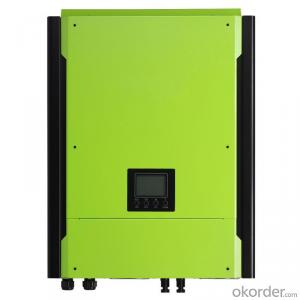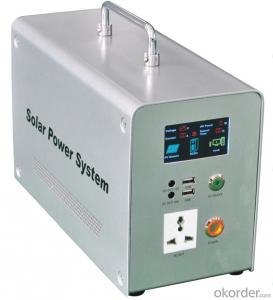Off-Grid Solar Inverter 100W-2400W Excellent Performance, Hige Stability
- Loading Port:
- China main port
- Payment Terms:
- TT or LC
- Min Order Qty:
- 1 pc
- Supply Capability:
- 1000 pc/month
OKorder Service Pledge
OKorder Financial Service
You Might Also Like
Off-Grid Solar Inverter 100W-2400W
EA-GF series products are on the basis of green energy use and equipment electricity need for remote area, combing the electricity characteristics of household appliances, communication station equipment and computer peripheral equipment. They have the fuction of enery conservation and environment protection. They adopt MCU control techniqute, having various kinds of function such as multi-setting mode, MPPT control, voltage stabilization on line, short-circuit protection, inverter frequency adaptive, output overload, batter charging management, monitoring etc. EA-GFseries products are the ideal power supply delivered with excellent performance, hige stability, high reliability and practical applicability.
● Multi-setting
※PV priority mode or AC priority mode
※Choose the charging current based on the configured capacity of the battery
● High reliability: Double MCU digital control
※Independent MPPT (Maximum Power Point Tracking) control microprocessor system
※Independent inverter microprocessor control system
● Isolated and pure sine wave technology
● LCD+LED display
● Wide input range
● High-speed synchronous conversion
● Friendly alarm system
● Online protection function
● Frequency auto adaptive
● Intelligent No-load auto shutdown technology (optional)
● Intelligent monitoring (RS232, USB, or SNMP card, optional)
Model | GF100 | GF400 | GF500 | GF800 | GF1000 | GF1500 | GF2000 | GF2400 | |
Power | 100W | 400W | 500W | 800W | 1000W | 1500W | 2000W | 2400W | |
Battery Voltage | 12Vdc | 12Vdc / 24Vdc | 24Vdc | 24Vdc | 48Vdc | 48Vdc | |||
Working Mode | PV priority / AC priority | ||||||||
PV | |||||||||
Input Voltage Range | 12Vdc-25Vdc | 12Vdc-25Vdc(12V) 24Vdc-45Vdc(24V) | 24Vdc-45Vdc | 48Vdc-90Vdc | |||||
Suggested Voltage Range(Vmp) | 15Vdc-17.8Vdc | 15Vdc-17.8Vdc(12V) 30Vdc-36Vdc(24V) | 30Vdc-36Vdc | 60Vdc-71Vdc | |||||
PV Current(Imp) | ≤20A | ≤40A | ≤40A | ≤60A | ≤80A | ||||
Max. Charge Current | 5A/10A/20A | 10A/20A/30A/40A | 10A/20A/30A/60A | ||||||
Conversion Efficiency | ≥ 98% | ||||||||
Display | |||||||||
Panel Indicator | LCD + LED | ||||||||
AC mode | |||||||||
Input Voltage Range | 100/110/120/220/230/240VAC±25%(customized) | ||||||||
Input Frequency Range | 45-65 Hz(Automatically transfer to inverter power when overfrequency) | ||||||||
Output Voltage Precision | 100/110/120/220/230/240VAC± 10% | ||||||||
Input PF.(AC/DC) | ≥98% | ||||||||
Charge Current | 12A max | ||||||||
Efficiency (Mains Mode) | ≥ 96% | ||||||||
Overload | 110% 255s transfer to bypass model; 120% 60s transfer to bypass model; 150% 10s transfer to bypass model; | ||||||||
Short Circuit Protection | Input fuse | ||||||||
Inverter Mode | |||||||||
Inverter Output Voltage | 100/110/120/220/230/240VAC± 5% | ||||||||
Output Frequency | 50 Hz / 60Hz ± 1% frequency auto sense | ||||||||
Wave Form Distortion | Linear load≤ 5% | ||||||||
PV-AC Transfer Time | 5 ms typical value; Max.8 ms | ||||||||
Max.Efficiency | ≥ 84.5% | ||||||||
Inverter Overload | 110% 255s transfer to bypass model; 120% 60s transfer to bypass model; 150% 1s transfer to bypass model; | ||||||||
No-Load Off(Optional) | Load< 5% The system automatically shut down at 1MIN, transfer to bypass power supply | ||||||||
Short Circuit Protection | Systems automatically shut down | ||||||||
Alarm | |||||||||
Mains Abnormal | 1/4s; automatic sound elimination after 40s | ||||||||
Low Battery | 5/1s | ||||||||
Overload | 1/1s | ||||||||
Communication Interface(Optional) | RS232 / USB / SNMP(Setup available for regular start/shutoff) | ||||||||
Others | |||||||||
Surge Protection | Optional | ||||||||
EMC | EN62040-2:2006;EN61000-3-2:2006; EN61000-3-3:2008 | ||||||||
IP Class | IP21 | ||||||||
Ambient Temperature | 0℃ ~ 40℃ | ||||||||
Ambient Humidity | 10% ~ 90%(Non Condensed) | ||||||||
Noise | ≤ 50dB | ||||||||
Dimension (WxDxH)mm | 315×458×147 | 380×480×202 | |||||||
Packing Dimension (WxDxH)mm | 380×500×195 | 458×545×278 | |||||||
Weight (kg) | 9.8 | 11.0 | 12.0 | 18.7 | 19.2 | 19.6 | 27.6 | 29.3 | 29.3 |
Packing Weight (kg) | 10.8 | 12.0 | 13.0 | 20.0 | 20.5 | 20.9 | 28.9 | 30.6 | 30.6 |
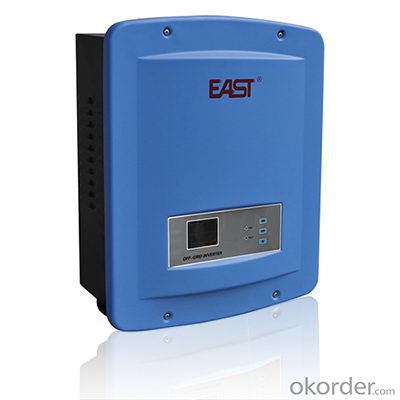

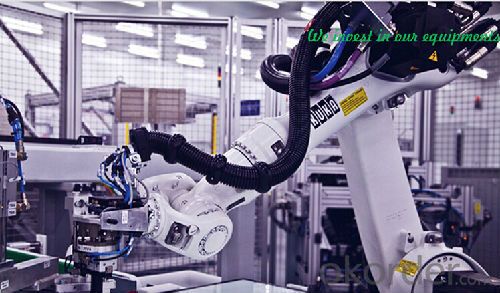
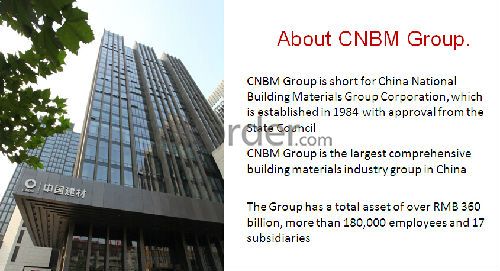
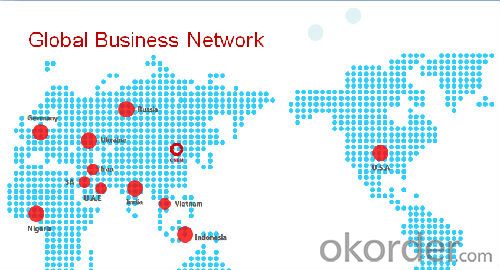
· Q. What is an UPS and What it is for ?
An uninterruptible power supply (UPS) is a device that allows your computer or telephone switch or critical equipement to keep running for at least a short time or longer time when the primary power source is lost. It also provides protection from power surges, spikes, brownouts, interference and other unwanted problems on the supported equipment.
· Q. How long the UPS to run when power goes?
This can take 3 paths.
1.You can pick a UPS that is rated for pretty much the full VA you need so it will be running at 100% of capability and will thus last 'n' minutes.
2.You can pick a UPS that is rated at a much higher VA value than you really need so, for example, is running at 50% of capability and will thus last for longer than the UPS from option 1.
3.You can use extra external battery packs to run for longer. If charging capability allows, the more and the bigger batteries you take with, the longer time UPS runs.
or using a generator after about 6 hours, it will be more cost-effective, with a short runtime UPS to bridge the generator start-up gap.
- Q: What are the safety measures to consider when installing a solar inverter?
- When installing a solar inverter, several safety measures should be considered. Firstly, it is important to ensure that the installation is performed by a qualified and certified professional to minimize the risk of accidents. It is crucial to follow the manufacturer's guidelines and recommendations during the installation process. Additionally, it is essential to disconnect the solar inverter from the power source before starting any installation or maintenance work to prevent electrocution. Proper grounding and wiring techniques should be followed to reduce the risk of electric shock or fire hazards. Adequate ventilation and temperature control should be provided to prevent overheating of the inverter. Regular inspections and maintenance checks should be conducted to ensure the inverter's safe and efficient operation. Overall, prioritizing safety measures during the installation process is crucial to protect both the installer and the system's end-users.
- Q: How does a solar inverter handle variations in grid frequency?
- A solar inverter handles variations in grid frequency by constantly monitoring the frequency of the grid and adjusting its own output accordingly. It does this through a process called frequency synchronization, where it synchronizes its output frequency with the grid frequency. This allows the solar inverter to seamlessly adapt to any changes in grid frequency, ensuring a stable and reliable power supply to the connected solar panels or the grid.
- Q: Can a solar inverter be used with a solar-powered healthcare system?
- Yes, a solar inverter can be used with a solar-powered healthcare system. A solar inverter is responsible for converting the direct current (DC) generated by the solar panels into alternating current (AC) that can be used to power electrical equipment. Therefore, it is an essential component in any solar-powered system, including healthcare systems, to ensure the efficient and reliable operation of medical equipment.
- Q: How does a solar inverter handle ground fault protection?
- A solar inverter handles ground fault protection by continuously monitoring the flow of current between the solar panels and the ground. If it detects any abnormal current leakage, indicating a ground fault, it quickly shuts down the system to prevent any safety hazards or damage to the equipment.
- Q: What is the operating temperature range of a solar inverter?
- The operating temperature range of a solar inverter typically varies, but it is commonly between -20°C to 60°C.
- Q: How does a solar inverter handle voltage regulation during sudden load changes?
- A solar inverter handles voltage regulation during sudden load changes by continuously monitoring the voltage levels and adjusting the power output accordingly. When there is a sudden increase in load, the inverter will automatically increase its power output to meet the demand and maintain a stable voltage. Conversely, if there is a sudden decrease in load, the inverter will reduce its power output to prevent voltage spikes and maintain a consistent voltage level. This dynamic response allows the solar inverter to effectively regulate voltage during sudden load changes and ensure the stability and reliability of the solar power system.
- Q: How does a solar inverter handle variations in grid voltage?
- A solar inverter handles variations in grid voltage by continuously monitoring the grid voltage and adjusting its own output voltage accordingly. It uses advanced control algorithms to maintain a stable and consistent output voltage despite fluctuations in the grid voltage. This ensures that the solar power generated is synchronized with the grid and can be seamlessly fed into the electrical system.
- Q: How does the temperature affect the performance of a solar inverter?
- The temperature affects the performance of a solar inverter by influencing its efficiency and power output. Higher temperatures can cause the inverter to operate less efficiently, resulting in a decrease in its overall performance. This is because the semiconductor components in the inverter may experience increased resistance, leading to more power losses and reduced conversion efficiency. Additionally, excessive heat can also lead to thermal stress and component degradation, potentially impacting the long-term reliability and lifespan of the inverter.
- Q: Can a solar inverter be used in areas with unstable grid connections?
- Yes, a solar inverter can be used in areas with unstable grid connections. Solar inverters are designed to convert the DC power generated by solar panels into usable AC power for consumption or to be fed back into the grid. In areas with unstable grid connections, solar inverters can still function and provide power by utilizing battery storage systems or operating in off-grid mode. This allows for uninterrupted power supply and provides stability in areas with unreliable grid connections.
- Q: What is the role of maximum power control in a solar inverter?
- The role of maximum power control in a solar inverter is to optimize the power output of the photovoltaic (PV) system by continuously tracking the maximum power point (MPP) of the solar panels. This control mechanism ensures that the inverter extracts the maximum amount of energy from the PV array, despite variations in solar irradiation and temperature. By constantly adjusting the inverter's operating conditions to match the MPP, maximum power control maximizes the overall efficiency and performance of the solar power system.
Send your message to us
Off-Grid Solar Inverter 100W-2400W Excellent Performance, Hige Stability
- Loading Port:
- China main port
- Payment Terms:
- TT or LC
- Min Order Qty:
- 1 pc
- Supply Capability:
- 1000 pc/month
OKorder Service Pledge
OKorder Financial Service
Similar products
Hot products
Hot Searches
Related keywords
